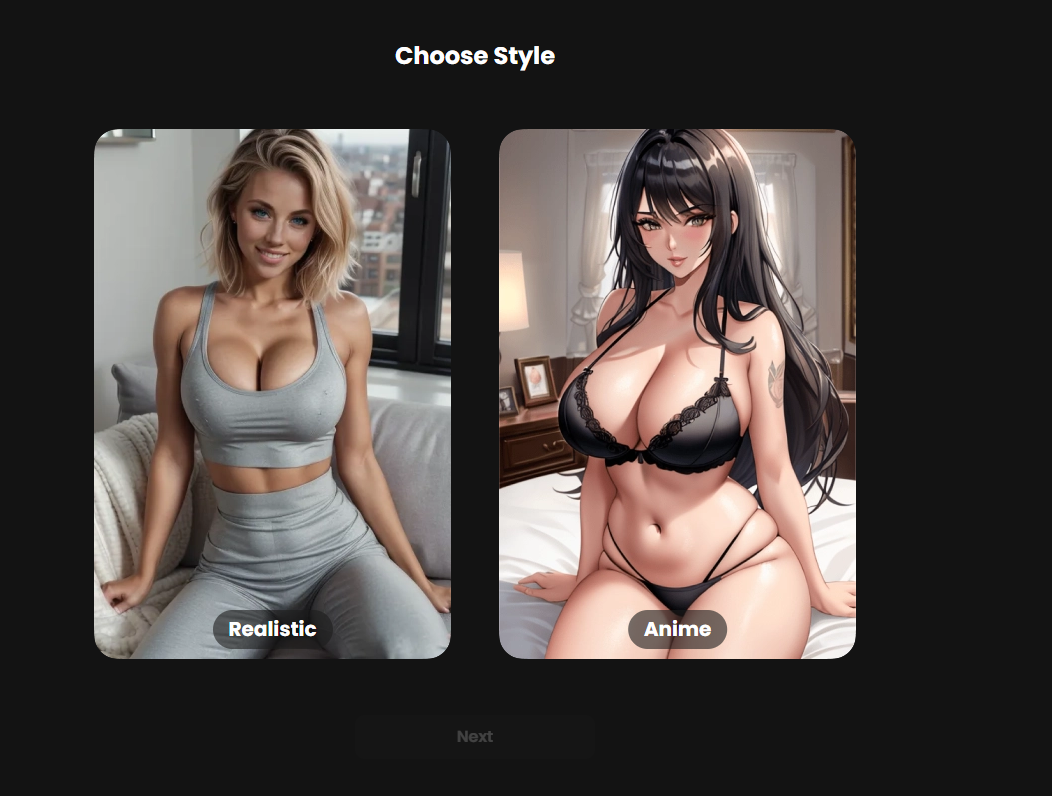When it comes to the latest fashion and beauty trends, technology has been making a significant impact. From virtual try-on apps to AI-powered skincare recommendations, the industry is constantly evolving with the help of advanced technology.
However, one trend that has caught everyone’s attention is the rise of Ai cameltoe – a term used to describe the use of artificial intelligence in creating perfectly fitted clothing that accentuates the female figure. This groundbreaking concept is not only changing the way we shop for clothes but also challenging traditional standards of beauty.
What is AI Cameltoe?
Before we dive into how technology is redefining fashion and beauty, it’s important to understand what exactly AI cameltoe is. Simply put, it’s a term used to describe artificial intelligence (AI) systems that are specifically designed for creating and enhancing clothing items that accentuate the female genitalia.

Candy.ai: Sweetening Up Your Wardrobe
One popular AI cameltoe system on the market today is Candy.ai. Developed by a team of fashion designers, engineers, and data scientists, this platform uses machine learning algorithms to create clothing designs that highlight and enhance the appearance of a woman’s cameltoe.
Pros:
- Allows for customization of clothing to fit individual body shapes
- Provides new options for women who want to embrace their bodies’ natural curves
- Gives designers more creative freedom in designing clothes that cater to specific trends
Cons:
- Can perpetuate objectification of women’s bodies
- Might lead to increased pressure on women to conform to society’s expectations of beauty
- Promotes unrealistic body standards by focusing on one specific body part
Seduced.ai: The Temptation of AI Cameltoe
Another popular AI cameltoe system is Seduced.ai, which promises to seduce and entice consumers with its virtual try-on technology. This platform uses a combination of computer vision and deep learning techniques to create realistic simulations of how different clothing items would look on an individual’s body.
Pros:
- Allows for more efficient online shopping by eliminating the need to physically try on clothes
- Can improve customer satisfaction and reduce returns for online retailers
- Gives consumers a better idea of how clothing will fit and look on their bodies before making a purchase
Cons:
- The virtual try-on feature may not accurately represent the fit and feel of the actual garment, leading to disappointment upon receiving the product
- Might lead to a decrease in physical store sales as more customers turn to online shopping
- Potentially promotes consumerism and materialism by encouraging excessive purchases based on appearance rather than practicality or need

PromptChan: The Ultimate Styling Assistant
A third player in the AI cameltoe market is PromptChan. Unlike Candy.ai and Seduced.ai, this platform does not focus solely on clothing design or virtual try-on technology. Instead, it acts as a personal styling assistant, using AI algorithms to suggest outfits that highlight the wearer’s cameltoe.
Pros:
- Promotes self-confidence by suggesting ways to embrace one’s own body
- Saves time and effort for those who struggle with styling themselves or lack fashion expertise
- Provides new outfit ideas that may not have been considered before
Cons:
- Potentially reinforces the idea that one must have a certain body type or feature to be considered fashionable or attractive
- May not take into account the individual’s personal preferences and comfort level, leading to outfits that are not suitable for their lifestyle or personality
- Might lead to a decrease in individual creativity and personal style expression
The Controversy Surrounding AI Cameltoe
The rise of AI cameltoe has sparked a significant amount of controversy. Many argue that these technologies are objectifying and sexualizing women’s bodies, perpetuating harmful beauty standards and promoting unrealistic expectations. On the other hand, supporters of AI cameltoe argue that it is simply providing consumers with more options and choices when it comes to fashion and self-expression.
This debate raises important questions about the role of technology in shaping societal norms and ideals. With AI cameltoe, we see how advancements in artificial intelligence can impact not only industries such as fashion and beauty but also society’s perception of femininity, beauty, and sexuality.
The Ethical Concerns of AI Cameltoe
Aside from its potential impact on societal norms, there are also ethical concerns surrounding AI cameltoe. One major issue is data privacy. These platforms rely heavily on user data to create personalized experiences for customers; however, this means that they have access to sensitive information about an individual’s body shape and appearance. As with any technology that collects personal data, there is always a risk of this information falling into the wrong hands or being used for unethical purposes.
Some experts have raised concerns about consent. While users may willingly engage with these systems by uploading photos or using virtual try-on tools, there are questions about whether they fully understand how their data is being used and if they have given informed consent for it to be used in this manner.
The Impact on the Fashion and Beauty Industries
Regardless of the controversy and ethical concerns surrounding AI cameltoe, there is no denying its impact on the fashion and beauty industries. These technologies have opened up new possibilities for designers, retailers, and consumers alike. They have also changed the way we think about clothing and our bodies. With AI cameltoe, it’s not just about finding clothes that fit; it’s about finding clothes that enhance certain features or create a specific aesthetic.
The Changing Definition of Beauty
One of the most significant ways in which technology is redefining fashion and beauty is by challenging traditional ideas of what is considered beautiful. In the past, beauty standards were often based on homogenous ideals promoting thinness, youthfulness, and symmetry. However, with the rise of AI cameltoe and other technologies that promote body positivity and individuality, we are starting to see a shift towards a more inclusive definition of beauty.
Acknowledging different body types, sizes, ages, and abilities has become increasingly important in today’s society. And with tools like Candy.ai and PromptChan that celebrate natural curves and promote self-confidence through clothing choices, we are seeing an exciting change in the way fashion and beauty are portrayed. So, are you and your partner looking for some extra spice in the bedroom? Look no further than hookup websites for couples! These sites offer a safe and discreet way for couples to connect with other like-minded individuals for fun and adventurous encounters.
The Role of Diversity in Technology
As we continue to explore the impact of technology on fashion and beauty, it’s crucial to recognize the role diversity plays in these advancements. The lack of diversity in tech has been well-documented; from gender imbalance to racial disparities, there is still much work to be done in creating an inclusive space for innovation.
But as we see more diversity in the teams behind these AI cameltoe systems, we are also seeing a more diverse approach to technology and its potential impact on society. With different perspectives and experiences, developers can create tools that cater to a wider range of individuals and promote inclusivity rather than exclusivity.
The Continued Growth of AI Cameltoe
While the rise of AI cameltoe has raised many ethical concerns and sparked debates about societal norms and beauty standards, there is no denying its impact on the fashion and beauty industries. As technology continues to evolve, we can expect to see even more advancements in this area, with new platforms and tools emerging to cater to consumers’ desires for personalization and self-expression.
It’s up to us as consumers to critically consider the implications of these technologies and hold companies accountable for their actions. Only then can we ensure that the changing face of fashion and beauty is ultimately one that embraces diversity, promotes body positivity, and celebrates individuality.

Candy.ai
✔️ Generate AI Porn Images
✔️ Listen To Voice Messages
✔️ Fast Response Time

Seduced.ai
✔️ Generate AI Models
✔️ Save & Reuse Girls
✔️ 300 Images Per Month

PromptChan.ai
✔️ Completely Free To Test
✔️ Edit Your AI Models
✔️ Make Porn Images (no limit)
What is AI cameltoe and how does it work?
AI cameltoe refers to the use of artificial intelligence technology to enhance and manipulate images or videos in a way that accentuates the appearance of a woman’s genital area. This can be achieved through various techniques such as deep learning algorithms and image manipulation software, which analyze and alter pixels to create a more defined outline. However, this practice is controversial and raises ethical concerns regarding objectification and consent.
Can AI accurately identify and classify cameltoe in images?
Yes, AI technology has advanced to the point where it can accurately identify and classify cameltoe in images. With the use of machine learning algorithms, AI is able to detect and analyze subtle visual cues such as shadows and clothing folds, resulting in accurate identification of cameltoe. There has been a rise in the popularity of Lesbian AI Porn as more and more people are turning to technology for their sexual desires. This capability can be applied in various industries such as fashion, sports, and medical imaging.
Are there any potential ethical concerns surrounding the use of AI for detecting cameltoe?
There are potential ethical concerns surrounding the use of AI for detecting cameltoe. These include issues of privacy and consent, as well as perpetuating objectification and body shaming of women’s bodies. There may be biases in the AI algorithm that could unfairly target certain individuals or groups. It is important to carefully consider and address these concerns before implementing such technology.
